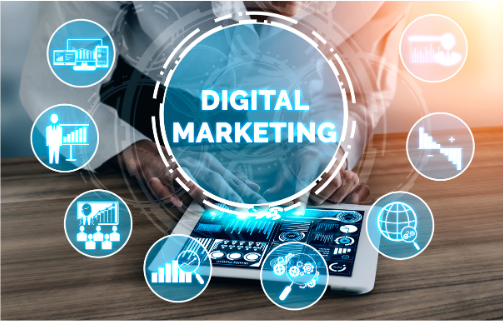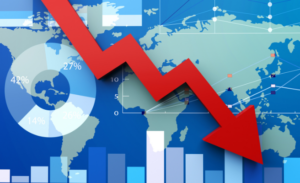
28 May How to Stop Losing Customers — And Build a Marketing System That Scales
Generational Shift: From Rolodex to Digital Natives

- Boomers & Gen X: These generations built brands with Rolodexes, handshake deals, trade shows, and face-to-face relationships. Growth came from in-person trust and traditional networking.
- Millennials & Gen Z: These younger generations live in the cloud. They discover, research, and trust brands online – via search engines, social media, email, and peer reviews – rather than through cold calls or trade shows. Millennials and Gen Z now make up the majority of today’s buyers and bring digital-first expectations to every purchase.
- Bottom Line: If you’re not marketing digitally, you’re invisible to the next generation of buyers. Failing to show up online means effectively not existing in the eyes of Millennials and Gen Z.
Why Digital Marketing Is Critical Today

Modern marketing channels let you reach more people with greater precision and ROI than old-school methods. Here are four high-impact digital tactics and why they matter:
- Digital Advertising: Online ads offer unmatched reach and targeting. Platforms like Google and Facebook can deliver your message at scale to exactly the right audience. In fact, 86% of businesses now advertise on Facebook/Instagram – a testament to their massive reach and precise targeting capabilities . Instead of hoping to meet a prospect at a trade show, you can appear in front of thousands of likely buyers today, filtered by interests, job title, location, etc. This scalability simply can’t be achieved with broker networks or word-of-mouth alone.
- Email Marketing: The humble email is a ROI powerhouse. It might sound old-fashioned, but email has the highest return on investment of any marketing channel – an average of about $36 in revenue for every $1 spent . No other medium converts prospects to customers as cost-effectively. A well-nurtured email list lets you regularly engage buyers with product news, education, and offers. Done right, email marketing builds loyalty and drives repeat sales (all at a fraction of the cost of trade show travel or print ads).
- Content Marketing: Creating valuable content (blogs, videos, guides) builds trust with your audience and boosts your Google SEO. By educating customers and addressing their pain points, you become a trusted authority in your niche. 63% of content marketers report that content marketing has helped them build customer loyalty . This trust translates into sales: helpful articles and how-tos draw in buyers organically via search engines and keep your brand top-of-mind. Plus, content has a compounding effect – one blog post can continue bringing in traffic (and leads) for years, unlike a one-off trade show booth.
- Influencer Marketing: Partnering with influencers gives you instant social proof and access to new audiences. Influencers have dedicated followings in specific communities (e.g. a wellness YouTuber or fitness Instagrammer) that trust their recommendations. Around 69% of consumers say they trust influencer recommendations for new products – a level of credibility you can’t buy with traditional ads. By having respected voices showcase your product, you tap into ready-made audiences and gain credibility by association. It’s word-of-mouth at scale: one Instagram post or TikTok video can introduce your brand to thousands of potential customers who never heard of you before.
The Cost of Not Evolving

Sticking to the old playbook might feel comfortable, but it carries serious consequences in today’s market:
- Missed Customer Segments: If you ignore digital channels, you risk missing entire generations of buyers. Millennials and Gen Z will soon account for nearly half of all retail spending . By not engaging online, you’re effectively locking your doors to this huge (and growing) customer base. In B2B contexts too, younger decision-makers won’t pick up the phone or meet at expos – they’re doing research on LinkedIn, Google, and industry forums. A competitor with a strong online presence will grab these customers while you’re stuck relying on dwindling referrals.
- Shrinking Shelf Space: Retail buyers and distributors favor brands that generate consumer demand. If your brand isn’t visible or buzzworthy online, stores have less incentive to give you prime shelf placement – or any shelf space at all. Meanwhile, digitally savvy upstart brands are stealing market share from established companies by capturing the hearts of Millennial and Gen Z consumers . Inaction means watching newer, more agile competitors fill shelves and online carts that used to be yours. Simply put, adapt or get edged out.
- Long-Term Revenue Decline: Over time, an outdated marketing approach leads to an aging, shrinking customer base. As your once-loyal Boomers retire or move on, there are no younger buyers to replace them if you haven’t been courting them online. This can result in a slow bleed of revenue year after year. Many once-great brands that failed to embrace change have faded into irrelevance or gone bankrupt. (Remember Blockbuster’s fate when it ignored streaming?) To avoid a similar decline, brands must continuously evolve how they attract and serve customers.
Next Steps – Time to Scale Up
The good news is that it’s not too late to modernize your marketing and win back growth. Start by embracing the digital strategies above one step at a time. You don’t have to abandon the relationship-based tactics that worked in the past – just supercharge them with online reach and automation.
Ready to stop losing customers and build a marketing system that truly scales?
Get in touch with us to receive a complimentary strategy breakdown tailored to your brand. We’ll show you exactly how to evolve your marketing for the digital age and set up your business for its next generation of success.



